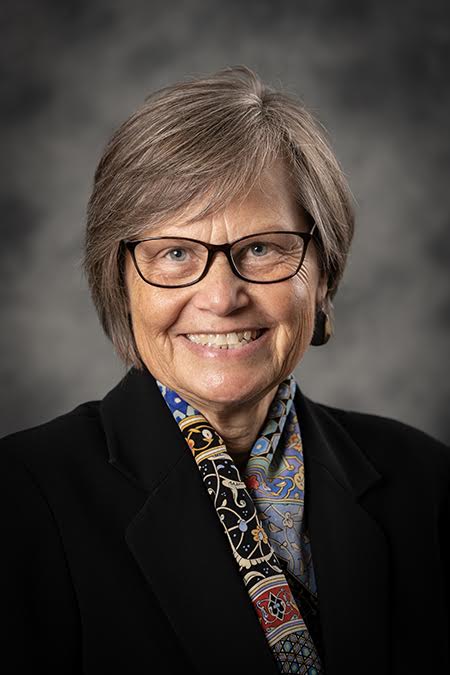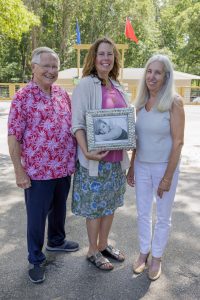By Daniel Dunaief
Friend or foe? The question isn’t as easy in the world of molecular biology as it might be after captains pick players for a team.
An important biomolecule in one context could trigger the growth or spread of cancer, while in another system or organ, that same signal might suppress or stop the development or growth of a disease that can threaten people’s health.
So it is for G-proteins, which, in some tumors, serve as tumorigenic signaling hubs that participate in invasion and metastasis and promote inflammation and immune evasion.
In tumors “there was this notion that it works in a certain way, driving tumor development and progression,” said Mario Shields, Associate Professor of Research Pathology at Stony Brook University. “We had that original hypothesis when we investigated it in pancreatic cancer. We found that it’s the opposite.”
Indeed, when the specific proteins he studies, called G alpha 13, are absent, mouse models develop well-differentiated tumors that reduce their survival.
“My research now is to understand why it’s playing the opposite role that we initially expected,” Shields, who joined Stony Brook in July after six years at Northwestern University.
Having worked at Cold Spring Harbor Laboratory in the lab of Mikala Egeblad from 2012 to 2018, Shields is returning to the Long Island area with a focus on defeating a problematic type of cancer that steals precious time from people and robs families of important members.
“I have come to appreciate the dire situation of people who are diagnosed with pancreatic cancer,” Shields said. “We need to figure out how to lower the curve.”
A recipient of the National Cancer Institute’s Moonshot Award, Shields is one of the first 11 Cancer Moonshot Scholars who received a total of $5.4 million.
The program, which was launched by the Biden administration in the summer of 2023, seeks to advance cancer science while diversifying the pool of early-stage researchers and approaches to research that NCI funds.
The goal of the program is to inspire and support scientists from diverse backgrounds, including those from underrepresented groups in the biomedical sciences.
The NCI award, which Shields brings with him to Stony Brook, will support his efforts.
Egeblad, who is now Bloomberg Distinguished Professor of Tumor Microenvironment, has stayed in contact with Shields since he left her group. The work he’s doing is “very important” in understanding the “basic mechanism of pancreatic cancer progression” as he has been “very successful in making discoveries and raising funds for his research.”
Egeblad appreciates his contribution to her lab. Shields “was responsible for establishing our research program in pancreatic cancer,” she explained. “Before he joined my lab, I had only worked on breast cancer and [Shields] established the various models to also study pancreatic cancer — models that we are still using.”
Building on CSHL work
At CSHL, Shields worked in Egeblad’s lab and received advice and oversight from David Tuveson, Cancer Center Director at CSHL, who developed the mouse model Shields uses.
Shields has been using human and mouse cell lines to interrogate the mechanism of action of these G proteins in suppressing cancer.
At Stony Brook, he plans to use patient samples to develop patient-derived tumor specimens.
The major hub of what Shields is studying is the mTOR pathway, which stands for mammalian/ mechanistic target of rapamycin. First isolated in a bacteria on Easter Island in the middle of the 20th century, rapamycin is an immunosuppressant drug.
Any defects that activate the mTOR pathway can lead to the growth and development of cancer.
A developing field
Shields explained that the G protein he is studying, G alpha 13, is a “niche” area right now, with few other labs pursuing the same mechanistic pathway. The G proteins are of more interest to molecular pharmacology and drug design.
In his studies, Shields hopes to use the information on the response to changes in the protein to predict how patients respond to therapy that inhibits the mTOR pathway.
Specifically, he is exploring how alterations in the microenvironment can cause the tumor to progress in pancreatic cancer.
Shields has found some “interesting dependencies” in the mechanism he’s studying. In the first year of work at Stony Brook, he would like to figure out how Ga13 regulates mTOR signaling, as the current context dependency is vague.
The gene that codes for this protein is not heavily mutated. Shields anticipates that a threshold level of the protein may be responsible for conveying its benefit in suppressing cancer, rather than a specific mutational change.
He is eager to explore whether nutrient availability plays a role in cancer progression through the reduction in this G protein. He has exploring that in vitro and is curious how that will translate at the organismal level.
Returning to Long Island
Shields had recently been Research Associate Professor in the Department of Medicine at the Feinberg School of Medicine at Northwestern University.
Having worked at Cold Spring Harbor Laboratory, Shields felt comfortable moving back to the Long Island area.
“Stony Brook is a good place to do research,” said Shields.
Additionally, Shields was impressed with the number of people who had presented their research from Pathology Chair Kenneth Shroyer’s lab at a conference.
“Further discussions [with Shroyer] indicated we have areas of common interest in terms of pancreatic cancer,” Shields added.
Shields appreciates the greenness of Long Island. When he worked at CSHL, he enjoyed walking on trails and enjoyed the variety of fall colors.
Shields brought one person with him from Northwestern and plans to have a lab of about six people.
As for running his lab, Shields plans to “be patient” and to “see where people are coming from and what they are capable of” as he takes on the role of mentor for members of his lab at Stony Brook.
Shields hopes to inspire and encourage under represented groups to pursue careers in science, technology, engineering and math.
Egeblad suggested that Shields is warm and calm, which “helps those entering the field really take to his instruction.” She added she believes he is an inspiration to many young scientists.









 The Sweet SummerFest offers a variety of activities and attractions for all ages. Attendees can enjoy live music, tastings, and a range of fun activities including a watermelon eating contest and a foam party. For
The Sweet SummerFest offers a variety of activities and attractions for all ages. Attendees can enjoy live music, tastings, and a range of fun activities including a watermelon eating contest and a foam party. For










